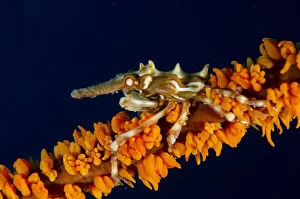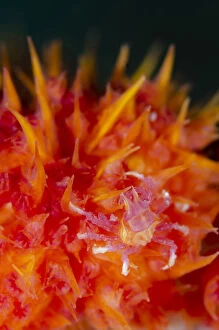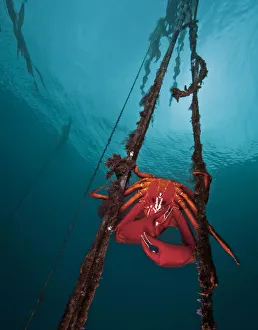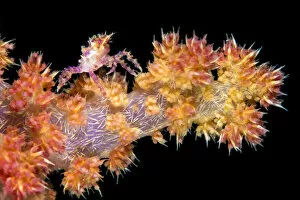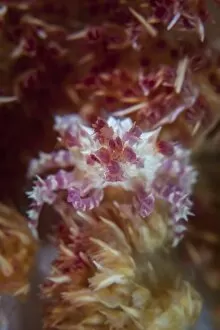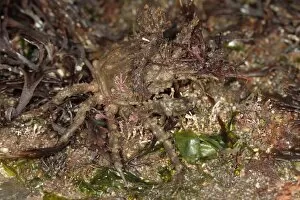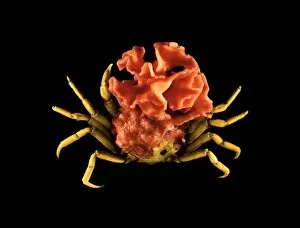Epialtidae Collection
"Epialtidae: Masters of Camouflage and Adaptation in the Crab World" Discover the fascinating world of Epialtidae
All Professionally Made to Order for Quick Shipping
"Epialtidae: Masters of Camouflage and Adaptation in the Crab World" Discover the fascinating world of Epialtidae, a family of crabs known for their incredible ability to blend into their surroundings. With species like the Northern kelp crab (Pugettia producta) clinging to a fallen tree branch off Vancouver or a large adult male clinging to strands of bull kelp, these crabs showcase their remarkable camouflage skills. Venture to Puerto Egas on Santiago Island, and you'll encounter Sally lightfoot crabs (Grapsus grapsus) gracefully navigating the beach. Their vibrant colors harmonize with the rocky landscape as they scuttle about, leaving mesmerizing patterns in the sand. Intriguingly, soft coral crabs such as Hoplophrys oatesil demonstrate an exceptional talent for blending into their host corals. Whether climbing out onto a branch of yellow soft coral or seamlessly merging with a coral colony on a reef, these small creatures become one with their environment. The Four-horned Spider Crab (Pisa tetraodon), found along England's Isle of Purbeck coastline, showcases its unique appearance and adaptability. Its intricate body structure allows it to thrive in various habitats while remaining inconspicuous among rocks and seaweed. Epialtidae exemplifies nature's ingenuity by evolving specialized adaptations that ensure survival amidst diverse ecosystems. From mimicking fallen branches or hiding within corals, these crabs have mastered the art of disguise and serve as living nature's extraordinary capabilities.

